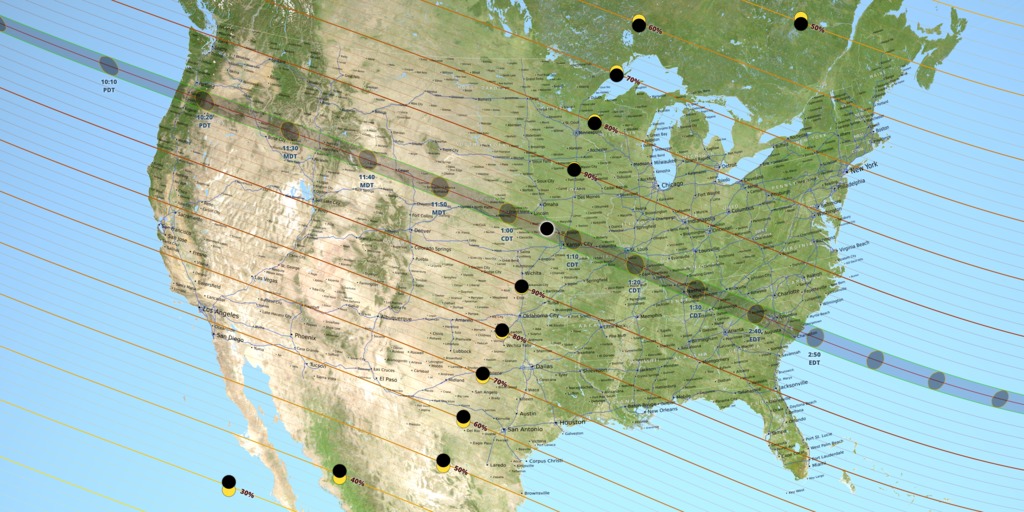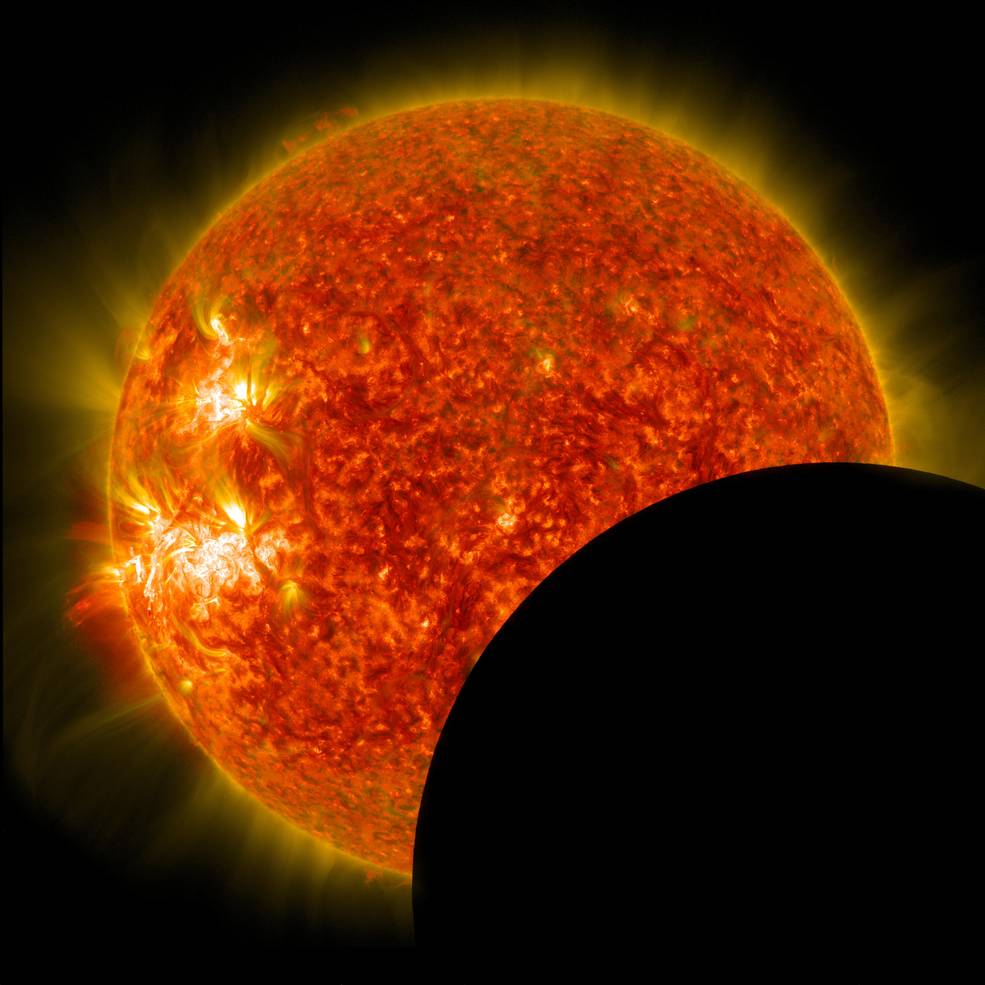Southern Research physicist Jim Tucker said a total solar eclipse cutting a path across the entire continental United States on Aug. 21 will offer dramatic views of a spectacular celestial event to millions – as long as they take precautions to observe it safely.
It’s the first total solar eclipse visible in the U.S. since 1979, though that one only touched a sliver of the Pacific Northwest. The last time a total solar eclipse crossed the entire U.S. was June 1918.
“It’s been a long, long time since a total eclipse was visible in the United States – and this one is particularly unique. They’re calling it the ‘Great American Eclipse’ because the U.S. is the only place where the total eclipse will visible,” said Tucker, who is director of Materials Research at Birmingham-based Southern Research.

This path of totality, as it’s called, starts off in Salem, Oregon, and ends in Charleston, South Carolina, later that day. Along a 14-state path, day will turn to night for around two minutes as the moon’s shadow completely obscures the Sun.
And while people living outside a 70-mile-wide corridor on the total eclipse’s path won’t see the full show, everyone else in the lower 48 states will get a chance to see a partial eclipse.
In Birmingham, the eclipse will be 93 percent total, meaning there won’t be a total blackout but skies will get dim, he said.
“If it’s a sunny day, as you approach the mid-eclipse, you’re going to have this sensation of it getting cooler, like a really big cloud is coming over,” Tucker explained. “It will seem cooler and darker. The Sun – you shouldn’t look at it without protection – will appear to have a bite out of it.”
SAFE VIEWING

Tucker stressed that everyone should use proper viewing equipment to observe the eclipse, or construct a pinhole camera to observe a projected image of the Sun.
“You should never look at the Sun. There’s never a time you should look at the eclipse without proper solar viewing equipment,” he said. “That does not include looking through three layers of sunglasses. That will not be OK because there will be ultraviolet rays getting through. Even though you cannot see UV rays, they can damage your retina.”
Southern Research is offering a spot to safely take in the Great American Eclipse.
From 12:30-2 p.m. Aug. 21, Southern Research will host a free eclipse-viewing event at its downtown Birmingham campus, where solar viewing glasses will be distributed. In addition, a telescope fitted with a solar filter will offer a detailed look at the Sun during the eclipse.
Visitors can also view live broadcast feeds of the eclipse from NASA and two of the agency’s WB-57 high-altitude research planes outfitted with a special high-definition imaging system developed by Southern Research.
HOW AN ECLIPSE HAPPENS
Tucker, an avid amateur astronomer, said a total solar eclipse happens when the alignment of the moon and Sun are just right. While the moon circles the Earth every month and nominally travels between the Earth and Sun, it has to be exactly in line with the Sun to cast a shadow on the Earth’s surface.
The Sun is much larger than the moon but also much more distant from Earth. As it happens, the Sun and moon appear about the same size in the sky, with the moon appearing larger when it’s closest to Earth and slightly smaller when at the farthest point in its orbit.

That can make a difference in a solar eclipse. There are times when the alignment is right but the moon doesn’t fully cover the Sun even at mid-eclipse, creating what looks like a ring of fire around the darkened solar disc. This is called an annular eclipse.
In a total eclipse, the moon appears bigger than the Sun and totally blocks its light for a period of time. At its longest duration, the “Great American Eclipse” will last for just over two and half minutes. In eclipses occurring when the moon is at its closest point to Earth, totality can last for more than seven minutes.
SECOND TOTAL ECLIPSE
On Aug. 21, Tucker plans to be near Kansas City, Missouri, to view his second total solar eclipse, where he hopes to encounter clear skies. The first was in 1970, when his family traveled to the Florida Panhandle.
“I was 8 years old, and I still remember it like it was yesterday. It was an incredible experience, even though it was cloudy. Still, it was amazing that in the middle of the day it got totally dark,” he said.
The next total solar eclipse to cross the U.S. will be in April 2024 on a path that takes it from Texas north to the Great Lakes.
Tucker’s career includes contributions to the James Webb Space Telescope, a next-generation successor to the Hubble telescope that NASA plans to launch in 2018.